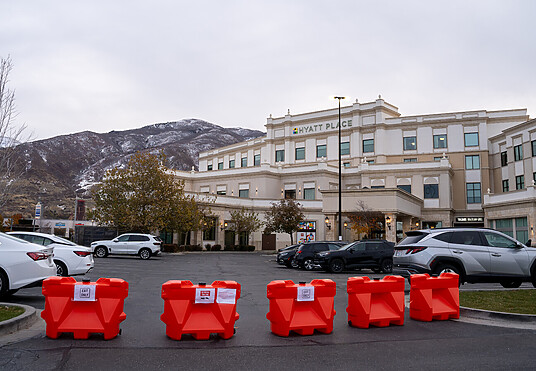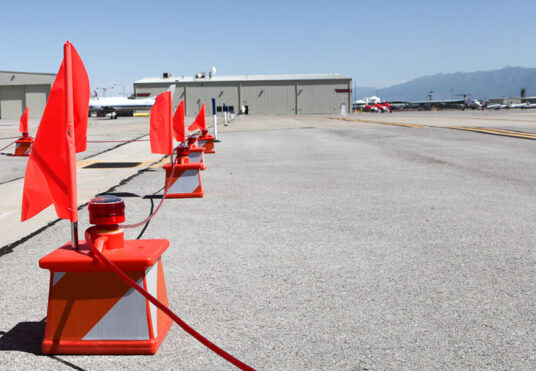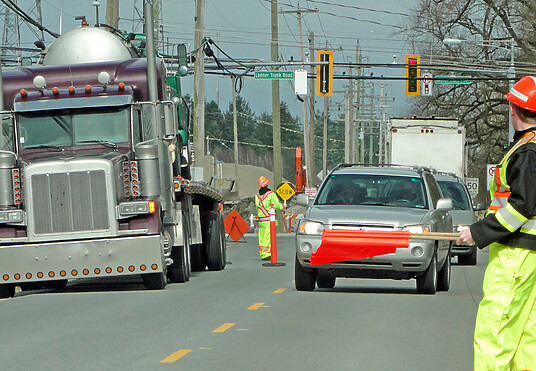Water-Filled Barriers vs Concrete Barriers: Pros & Cons
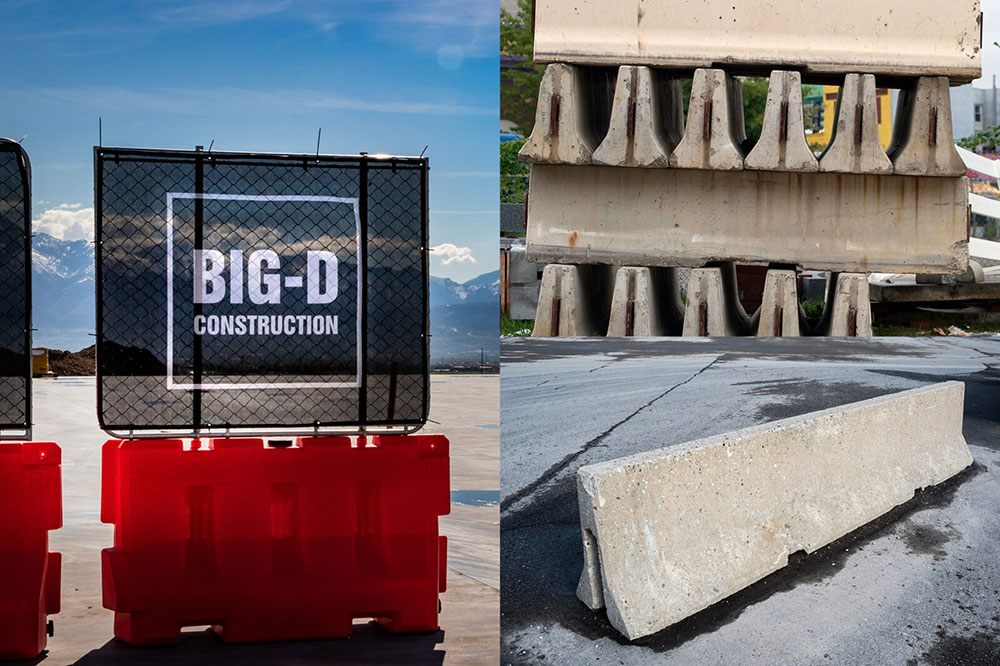
At OTW Safety, we know that concrete barriers and water-filled barriers are different. Both have their own unique uses due to their properties and design characteristics. Concrete barriers are far from perfect, but we also recognize that sometimes professionals may need to utilize them to form a solid barrier with minimal deflection to protect workers inside of a work zone. While plastic, water-filled barriers hold a number of key advantages over concrete barriers, concrete barriers and barricades can sometimes be a necessary purchase decision.
Here we’ll outline the pros and cons associated with plastic and concrete barriers and explain when it makes sense to invest in each.
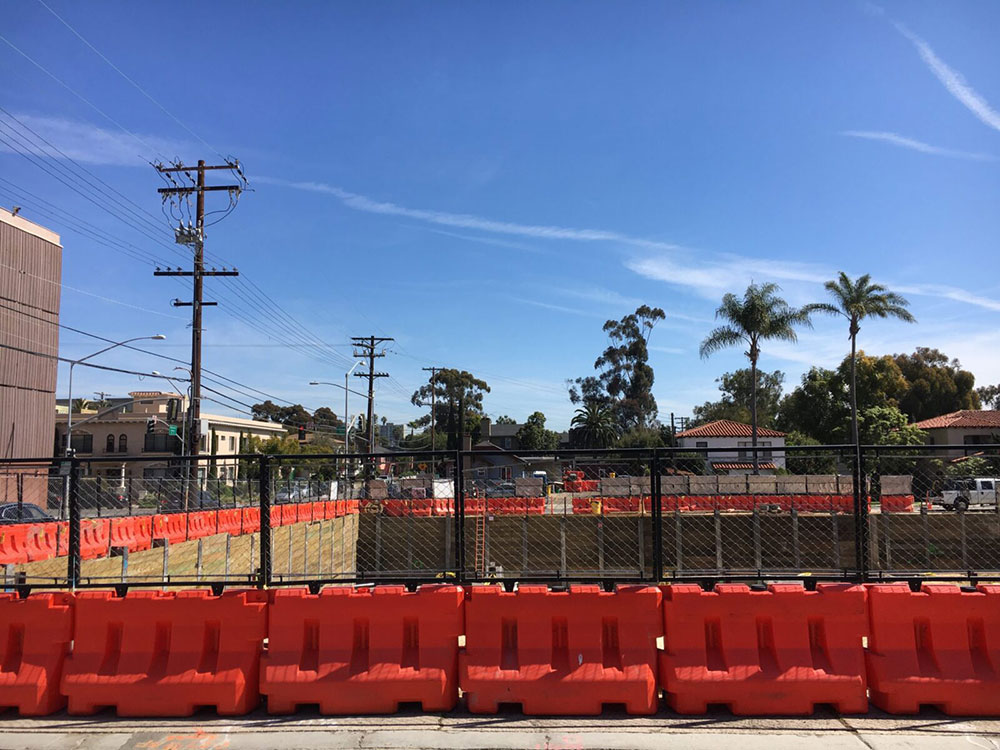
Water Filled Barriers: Pros
Plastic, water-filled barriers are very versatile in how they can be used. They are great for channelizing traffic (either pedestrian traffic or vehicle traffic), creating a visible deterrent to a job site, having a mobile and agile product to move around a job or project site, and they can be reused over and over again. Here are some of the key features that make water filled barriers an excellent option:
- High visibility. Plastic barriers come in a number of bright colors – most notably safety orange.
- Customization. Plastic barriers can be customized to include messages, logos, or advertisements from companies.
- Easy Additional Fencing. Modular fencing systems can be added to the barriers easily to create a robust and secure perimeter to a job site. The fence panels can be branded with customized fence screening or gawker screening. This custom screening option is a great way for companies to advertise to the public who they are!
- Durability. Plastic barricades are designed to handle all forms of bad weather and hold up for years. (Plus, we offer a one-year warranty on all of our products.)
- Strength. When filled (with water or sand), plastic barricades can weigh up to 900 lbs, and they’re some of the strongest barricades available on the market.
- Safety. Plastic barricades absorb the shock of impacts from crashes better than concrete barriers and reduce injuries and fatalities in work zone accidents when compared to concrete barriers.
- Sustainability. Plastic barricades can be recycled and are more environmentally friendly than their concrete counterparts.
- Cost-efficient. Plastic barriers represent tremendous value for money and are often cheaper than alternatives.
- Versatility. When emptied of water ballast, most plastic barricades are light enough for one person to carry. Plus, many can be folded up, moved and rearranged quickly, and stored without taking up too much space. Furthermore, plastic barricades contain no sharp edges or rough surfaces. This means they can be deployed safely, especially around children. Plastic barriers have been used in a variety of settings, including:
- Construction sites.
- Roadside construction sites.
- Parking lots.
- Schools/universities.
- Concerts.
- Go-kart courses.
- Airports.
Water Filled Barriers: Cons
- May not be suitable for sole use in construction areas with certain heavy equipment.
- Designed to absorb and provide a safe crash cushion for vehicles and driver – not to deflect vehicles and keep them out of the job site
- Bright colors may prove distracting in some instances.
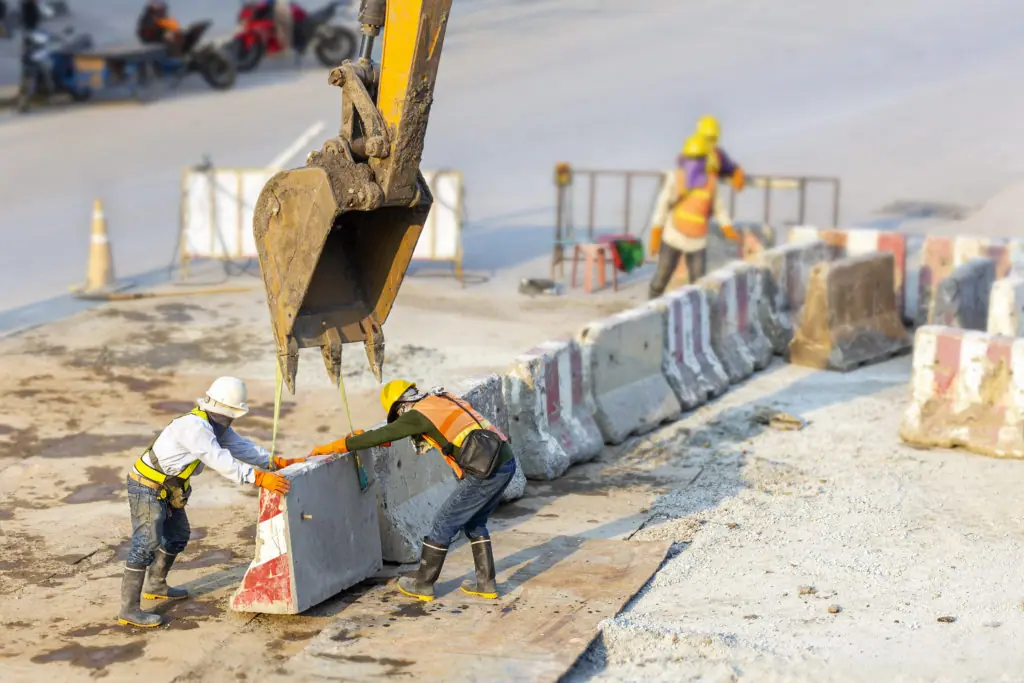
Concrete Barriers
When compared with plastic barriers, concrete barriers have only one main performance advantage. They are designed for minimal deflection and can serve as a solid carrier to entry when workers are behind the barrier working. Concrete barriers will sometimes be able to stop a large vehicle on impact when a plastic barricade might not.
Pros
- Create solid barrier with minimal deflection to keep workers safe from vehicle or heavy equipment while working.
- Regulated standards by state DOT’s (Departments of Transportation) mean the barriers work as intended for their specific purpose.
Cons
- Heavy and immobile.
- Lots of man-hour labor and heavy equipment costs to set-up
- Inability to lock together effectively.
- Not customizable.
- Not readily available or fast to get on site.
- Drab and gray. An eyesore for public events.
- Difficult to store.
- Degrades over time.
- Not suitable for indoor use.
Conclusion
If you don’t HAVE to use a concrete barrier on a project (the project specification and requirements say so), oftentimes a plastic barrier is a better value. There are more uses and advantages, lower costs, and overall provide a better lifetime value than concrete barriers. Plastic water filled barriers are an asset that any construction company should look at investing in if they have a requirement on a project. At OTW Safety, we don’t just sell plastic barriers –– we manufacture them. Our unique designs and highly-engineered solutions are an industry leader in safety and sustainability. We work hard to ensure that our customers receive the highest quality and best value products available.
Contact us here for more information. No matter where you’re located, Wyoming to Georgia or Nevada to Rhode Island, we can help.
